How Architecture Influenced Doug Johnston's Art
- 26 July 2016
- ByAndy Newman
- 10 min read
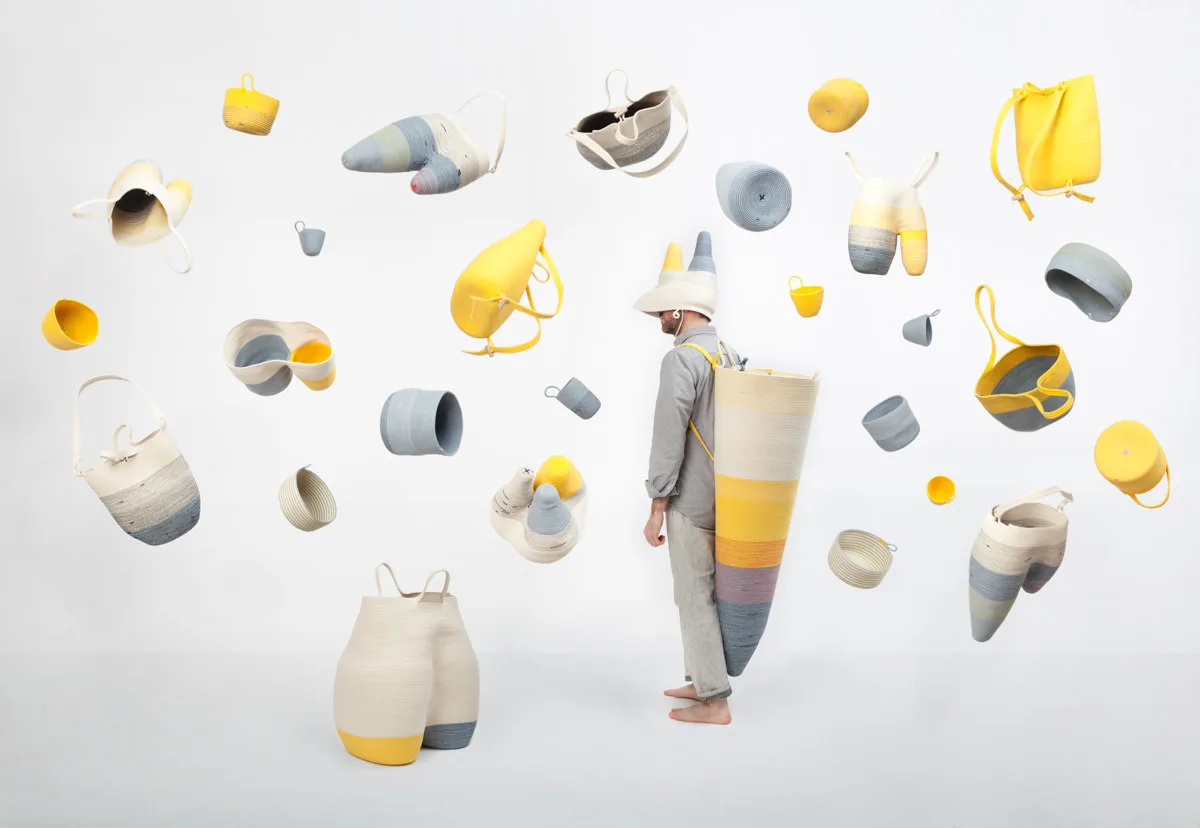
Doug Johnston makes art of all shapes and sizes. Once you see his products, you won't soon forget them.
We had to learn more about Doug's influences, what attracted him to art, and how working with his wife has influenced his process.

Photo by Clemens Cois
How'd you find your interest in art?
It all started with an interest in architecture, which later turned into an interest in art. When I was very young, maybe four or five years old, I saw a house in our neighborhood that looked a bit different from the other houses, and I asked my mom why. She told me people called architects decide what the houses will look like, where the walls will go, and everything else. I told her that I wanted to be an architect when I grew up.
In hindsight, I realize I was fascinated by the ability and possibilities of shaping the spaces around us, and experiencing it in very real and personal way. Later in school, I took some basic art classes and realized that art has the same potential, and typically with less constraints. I've since taken a path that is sort of between art and architecture and design.
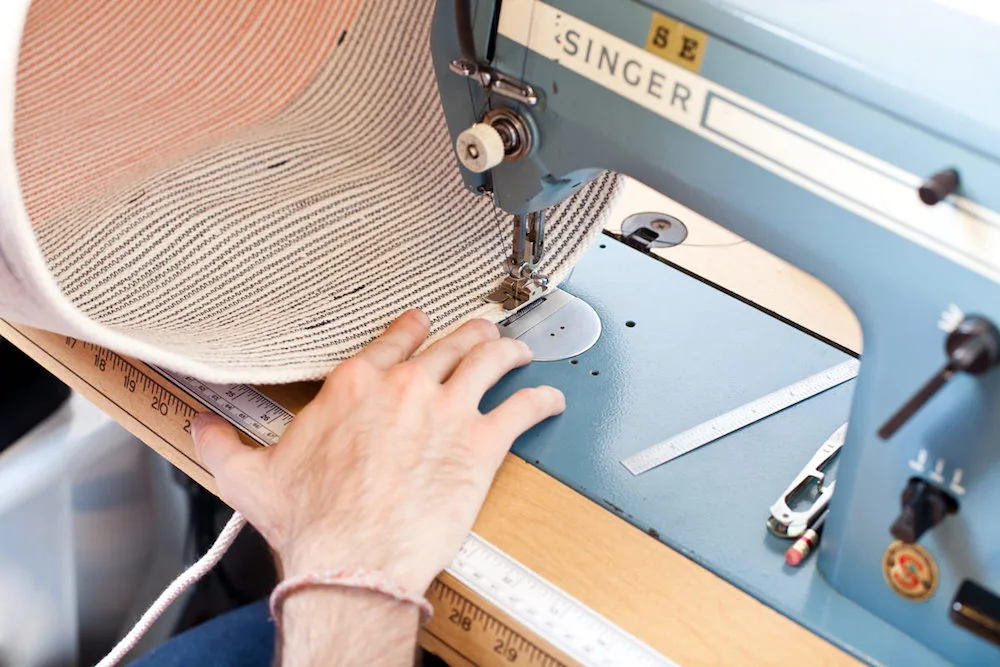
You've worked across a lot of mediums. How would you say your work with music or photography influences your approach to fiber art, sculpture, or product design?
Playing music has had a very big influence on my approach to making physical things. I was always more attracted to instrumental music and its ability to convey forms, ideas, and emotions. I think that helped me to really appreciate abstract art, whether it's a painting, sculpture, installation, or architecture.
There's a formal vocabulary in music and in visual/spatial art that can be developed and manipulated in analogous ways. Additionally, a lot of my most favorite experiences playing music were improvisational, where I would just start playing with another person - I primarily played the drums - and responding to every previous moment, with little or no planning or direction. This is very much how I like to work when I am making the stitched rope pieces. I typically have a basic plan, but I like to start working and see what happens. It's more exciting to me when something I work on takes an unexpected turn and I get to respond to that - it sometimes feels like I'm collaborating with the work itself as it's being made.
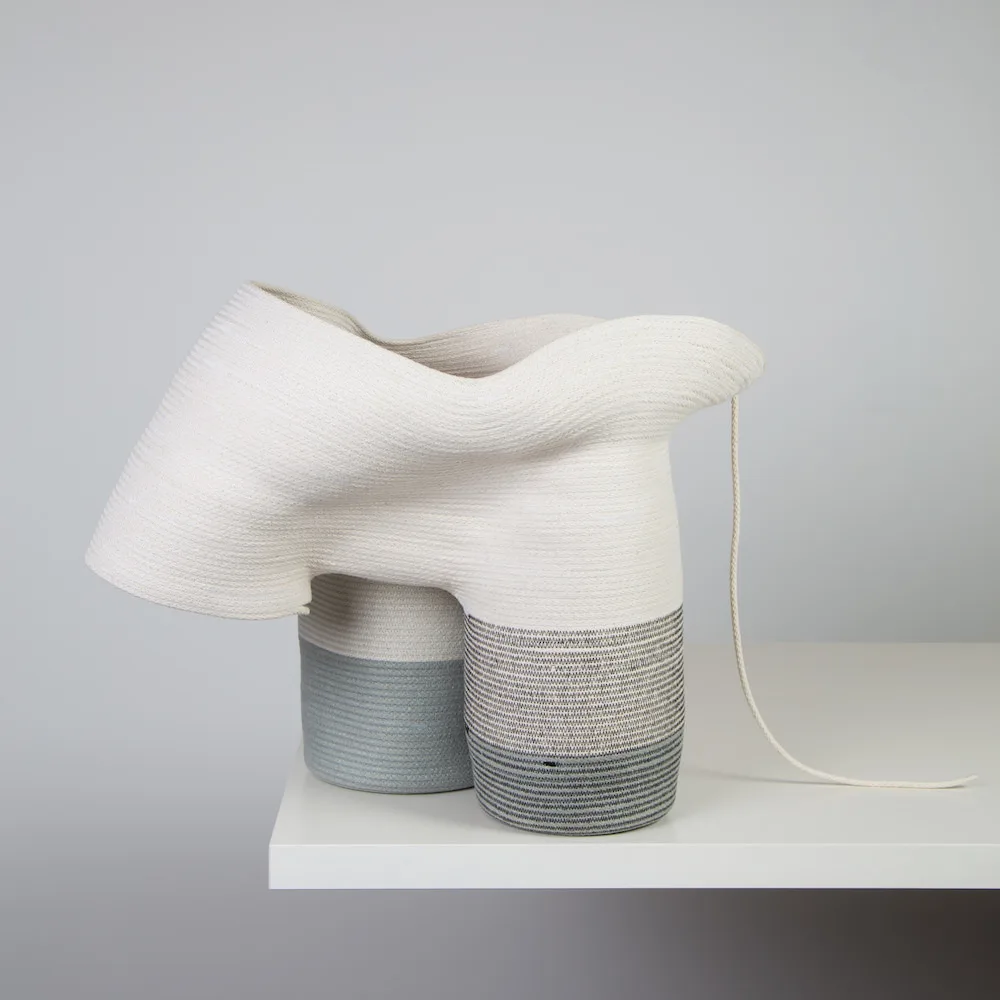
Sculptural vessel of cotton cord and sewing thread
And you also collaborate with your wife, Tomoe Matsuoka - how has that influenced your work?
Tomoe and I have a lot of overlapping interests and aesthetic sensibilities so we generally really like each other's work. A few years ago she started helping me with some administrative work in the studio and quickly started making pieces on the sewing machines too. She tends to be more attracted to technical challenges, fully jumping into work and ideas that I would shy away from in favor a more simplified approach. She also tends to work with more a plan in mind, but is open to deviation from the plans.
When we work together, we both tend to approach the work and ideas more playfully, which has been wonderful and is something I try to maintain in all my work. Tomoe's eye for detail and craft has encouraged me to continue to improve my skills and the quality of my work. She also looks deeply into historical forms and artifacts, and interprets them in wonderful ways. That's encouraged me to appreciate and understand how I can do that same in my own work.
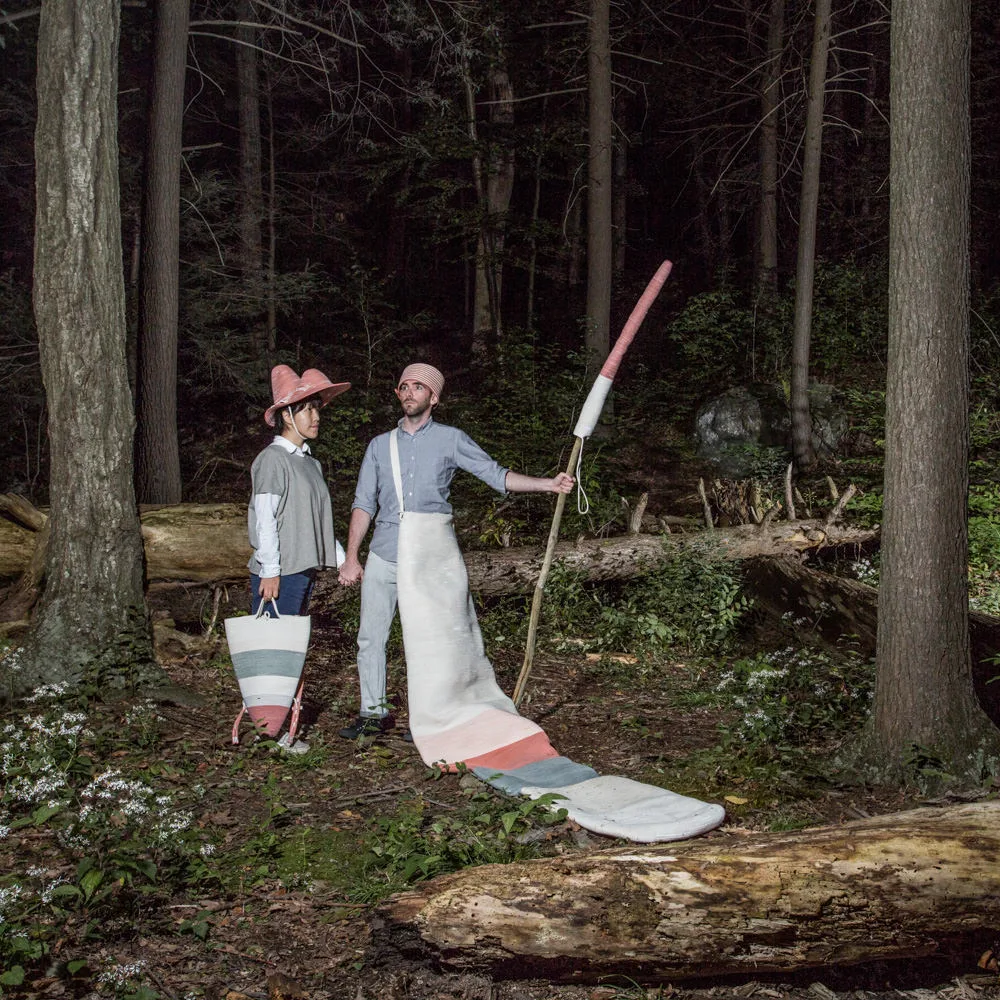
Collaboration with Tomoe Matsuoka, photo by Michael Popp
How do you look back on your formal education - completing a master of architecture degree - today? In what ways has it guided your path to where you are now?
While the work I was doing in grad school was conceptually and formally quite different, I learned a great deal about how to work in a disciplined yet open-minded way. I went to Cranbrook Academy of Art for my graduate studies because the program is very open-ended and multidisciplinary. There are no classes and no grades, so you are there to really dig deeply into your ideas and rigorously work through them. Cranbrook allowed me to explore work that was somewhere between art and architecture, and provided critical feedback from a variety of perspectives.
In the architecture department there was a lot of discussion about alternative practice models, which I always knew I would pursue. Those discussions and the freedom to really work on my own gave me a lot of confidence and commitment to continue my work after school as a life-long development. The work I'm doing now grew directly out of my thesis project, which was a collaboration with a classmate. Collaborating on that work helped me discover a way of working that felt very natural and exciting and I always try to keep that in perspective in my studio.
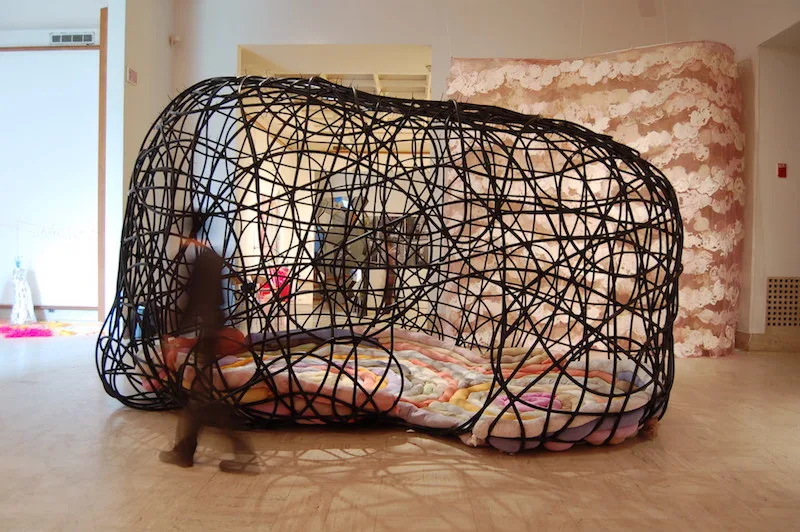
A Nest, thesis project with Yu-Chich Hsiao
Working with so many interesting shapes and sizes has to have presented some unique challenges. What kind of issues have you run into?
There have indeed been a lot of little challenges along the way. Some are technical in the construction of the pieces. The machines we use were never meant to be used in this way, so I've had to make tweaks and adjustments to them. I've also learned how to repair all our machines because they break down on a regular basis. Since we make a lot of the pieces in multiples or open editions, we have to understand exactly how to make a shape without the use of patterns, molds, or forms. The ability to make a shape consistently over and over from just an image and some dimensions is a special skill that takes a lot of practice. There is kind of split between the one-of-a-kind pieces that I make for gallery presentation and the open editions that we sell on the web shop and it can be challenging to communicate the difference between those and the editions to some clients and customers.
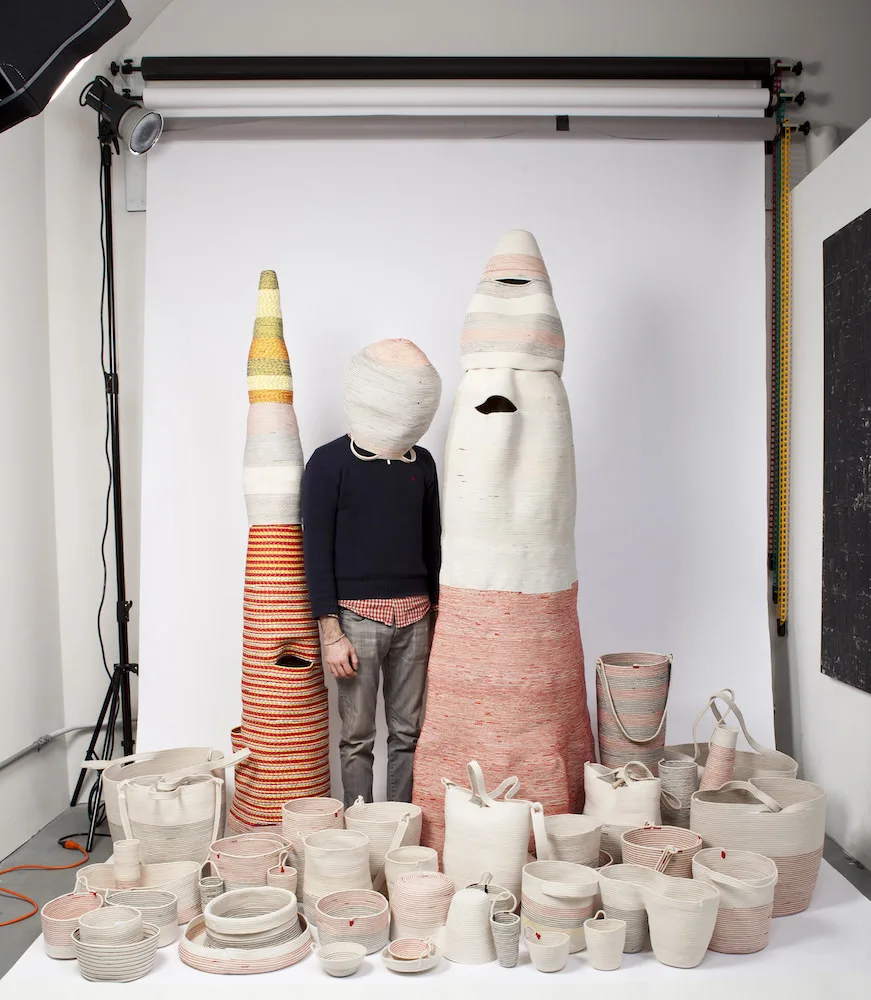
Photo by Michael Popp
How do you approach designing something like the cone backpack?
The cone backpack is actually a scaled-down, more practical version of a piece I made called the Big Backpack, which was made as part of a collection of sculptural pieces, bags, and baskets in 2014. The cone shape is based off of some traditional and primitive basketry forms and in the Big Backpack it was scaled to an almost comical size. The shape is both generic and unique enough that it seems like it is made for a specific but unknown purpose, and would carry an impractical amount of things. I was pretty happy with the shape, so Tomoe and I figured out a version that is scaled back down to an every day, practical bag shape. We also borrowed many details from the more traditional backpack shape that I'd been making for a couple years.
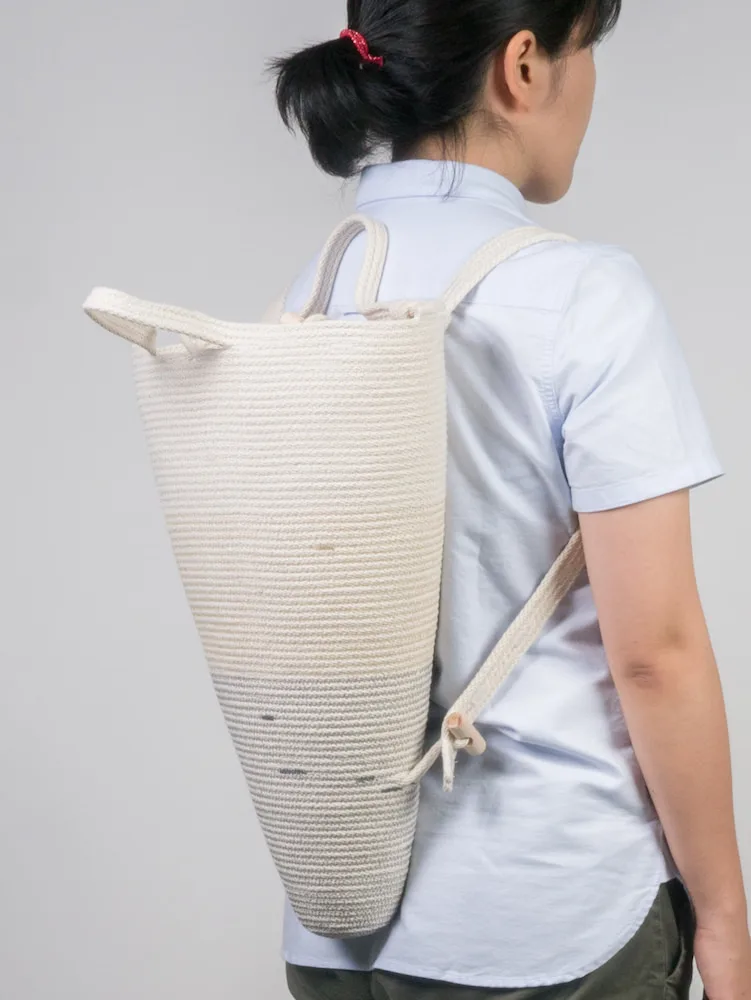
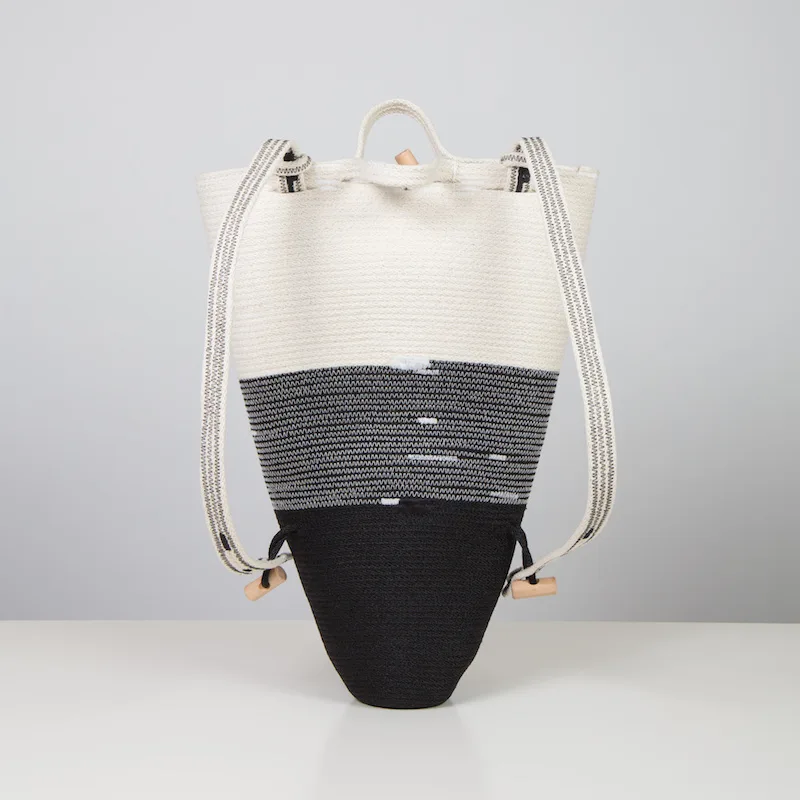
What's your process for shipping an order? Do you package your items in any special way?
Most everything in our shop is made to order, so we make it as soon as we can work it into our schedule. All our pieces have a nice hangtag with our logo and basic information. Because we make such a wide variety of shapes we can't stock boxes for every variation and instead have a range of about 5-6 box sizes. We find the closest box size, carefully cutting down if needed to reduce bulk. We wrap each piece in tissue paper and include a printed receipt with a small hand-written thank you note.
We also include a printed postcard of our work, sometimes related to the piece the customer purchased. The box gets a logo sticker on the outside and is typically shipped via USPS priority mail - we offer free domestic shipping on our entire shop!

Photo by Michael Popp
Who are some artists you find inspiring?
So many - probably too many to really name. I'm typically drawn to artists who work across disciplines but I like all kinds of artwork. Atelier Van Lieshout, Franz West, Andrea Zittel, Jessica Stockholder, Eva Hesse, and Jonathan Lasker are some of my long-time favorites. Others would include Matthew Ronay, Tauba Auerbach, Diane Simpson, Cody Hoyt, Max Lamb, Christy Matson, Tanya Aguiñiga, Thea Djordjadze, and Mimi Jung to name just a few. I look at a huge of amount of art and design, all the time. There's so much great work out there!
You can follow Doug on Instagram and Twitter, and pick up your own unique piece from his shop.
26 July 2016
Words by:Andy Newman
- Share